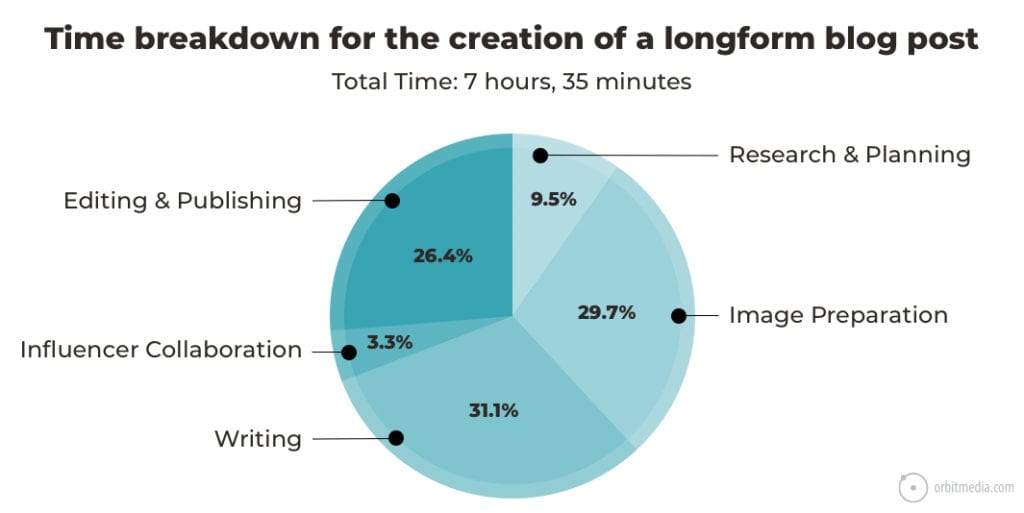SEO is all about text. Search engines read it, then rank it, right? And if the text is in an image, Google can’t read it. So images are a problem and the written word is all that is important. That’s how SEOs thought of images for years.
Not anymore.
Now we know that visuals are an SEO’s best friend. Or a very close friend.
There are at least six ways that images can improve your rankings. And this is not about Google Image Search and “Image SEO.” This is about how images can help your web pages rank in organic search.
Step one is to create high-value, original images and add them to your search-optimized articles. Examples include:
- Diagrams that explain a concept visually
- Charts within some original research
- Flowcharts that show a process
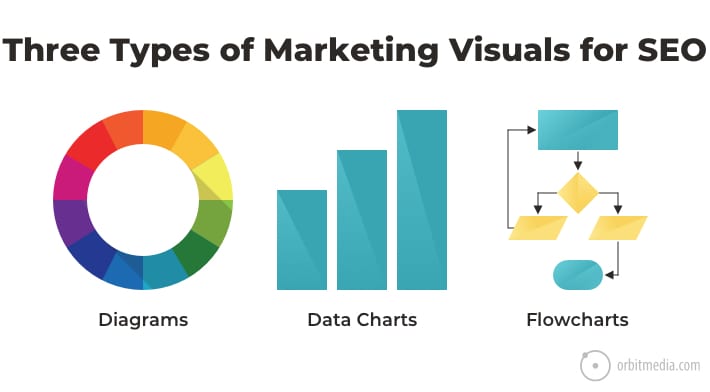
Each of these is a self-contained piece of visual content that explains a concept. Stock images don’t count. Just as you wouldn’t miss the chance to turn a paragraph of items into a bullet list, never miss the chance to use a visual to explain a concept.
So now that you have high-value images on your keyphrase-focused pages, here are six ways to leverage them to rank like a champ.
1. Image source link building with contributor quotes
You’ve been building relationships with content creators for years. You’ve included bloggers and editors in your content because you understand exactly how influencers affect SEO. Then one day, you get the email…
Someone would like to include you in their content.
This could be for a contributor quote, inclusion in a roundup or an interview request. You drop everything and go into PR mode. You lovingly craft a paragraph of insights that should fit perfectly into their piece.
But before you send it, you scan through your past content and look for related images. Find one? Add it to the contributor quote. And, of course, below the image, add the image source link.
They may be thrilled to have a high-value image to add to their piece. And naturally, they’re likely to include the link since that’s good attribution. It’ll look like this:
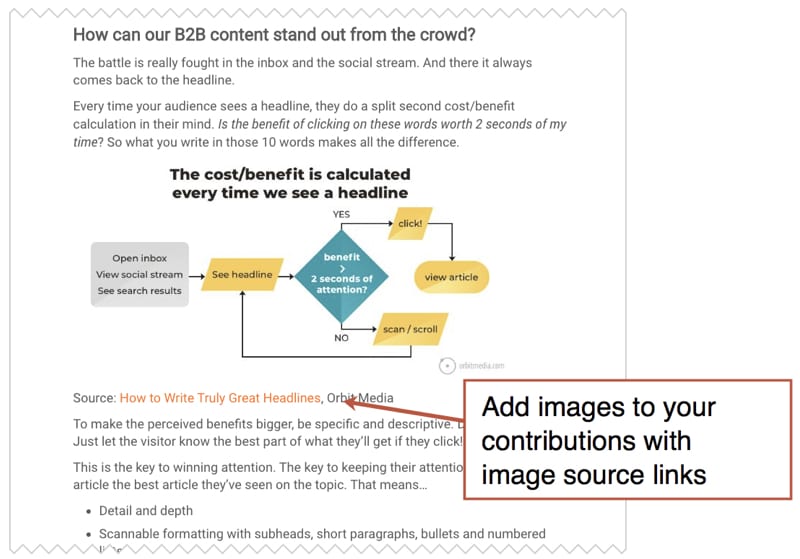
If you’re a fan of exact or partial match anchor text, this is an opportunity since the image source link is typically the title of the article, which includes the target keyphrase of that page.
Sometimes, the editor will make the link text just say “image source” which is fine, of course. Keep working this strategy and eventually you’ll notice “image source” as a popular anchor text in links to your site.
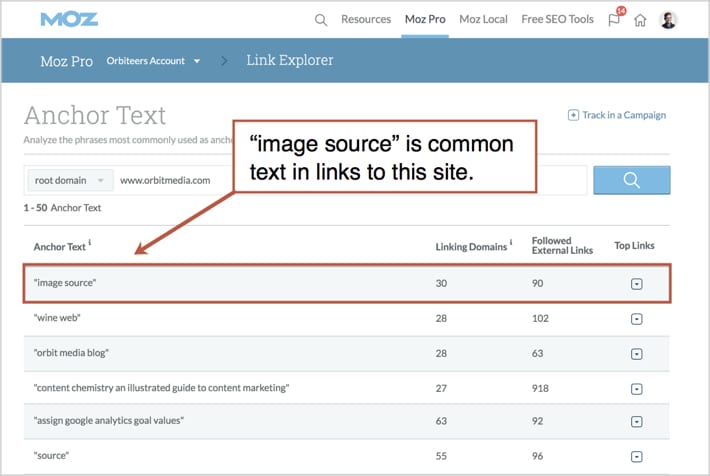
This clearly shows the value of images in SEO. Undeniable!
2. Make friends with copyright violators
Maybe people are already using your images in their content. If you find them, you can reach out and threaten them with legal action (useless). Or you can reach out and confirm that they’re giving you proper attribution, as in a link (high value!).
To find all the places that are using your images, use reverse image lookup. It’s easy and fun. Just go to Google Image Search and click on the camera icon. Upload any of your images and Google will show you matches on other websites.
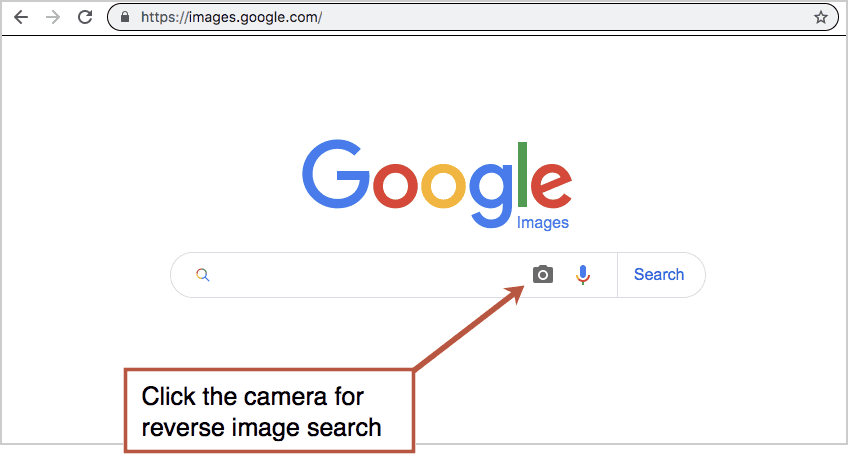
Now scan through the list. Skip past your site and social media sites. See any blogs?
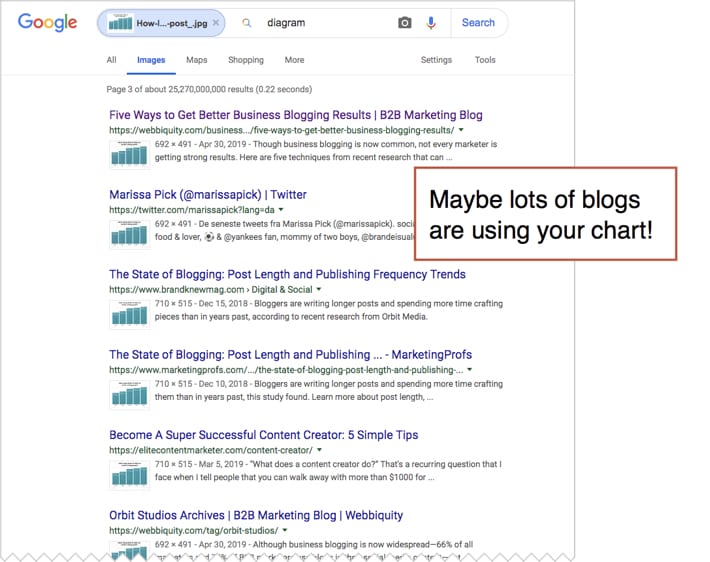
Click through to the pages. See your visuals there? Did they cite you as the source? If not, reach out to the writer or editor and politely remind them that they are using your work. You don’t mind a bit as long as they link back to the original version on your site.
 |
Britney Muller, Marketing Manager, Hugging Face“Reclaiming stolen photo credit is one of the easiest ways to do link building! It also has a much higher success rate than other forms of cold email outreach.” |
3. Make a new page and target the “diagrams” or “charts” phrases
If you have a bunch of images, you can round them up into a new piece of content. Put your visuals together into a post. Target a phrase that includes your industry plus “diagrams” and see what happens.
Years ago, we put some of our diagrams together into a blog post. It’s a simple roundup called 7 Marketing Diagrams That Explain Content Marketing. It targets a fun phrase: “marketing diagrams.”
That post has attracted a steady trickle of visitors for years. Search ranking durability is a function of how much new content appears on that topic. Apparently, not a lot of people are writing new articles about marketing diagrams.
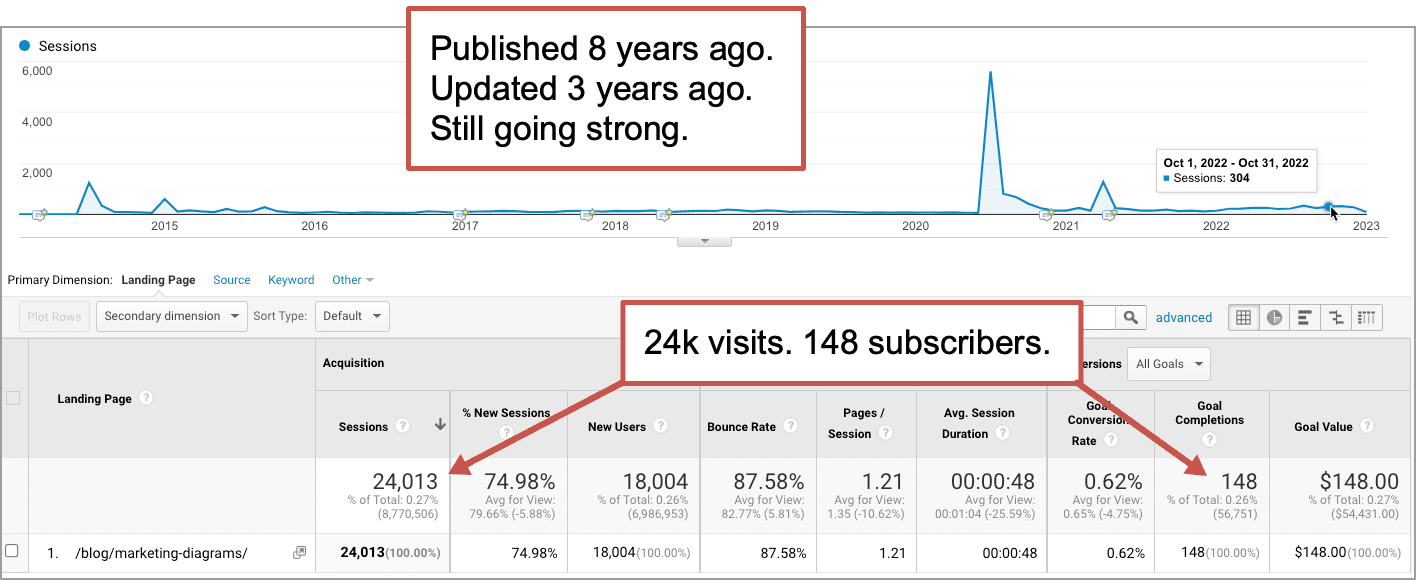
For us, for this one post, it’s meant thousands of visitors and dozens of subscribers.
4. Improving mobile search snippets
Even when they don’t affect rankings, even when they don’t help with links, images can affect click through rates from search because they are often extracted from the content and shown by Google within search snippets. This is especially common on mobile.
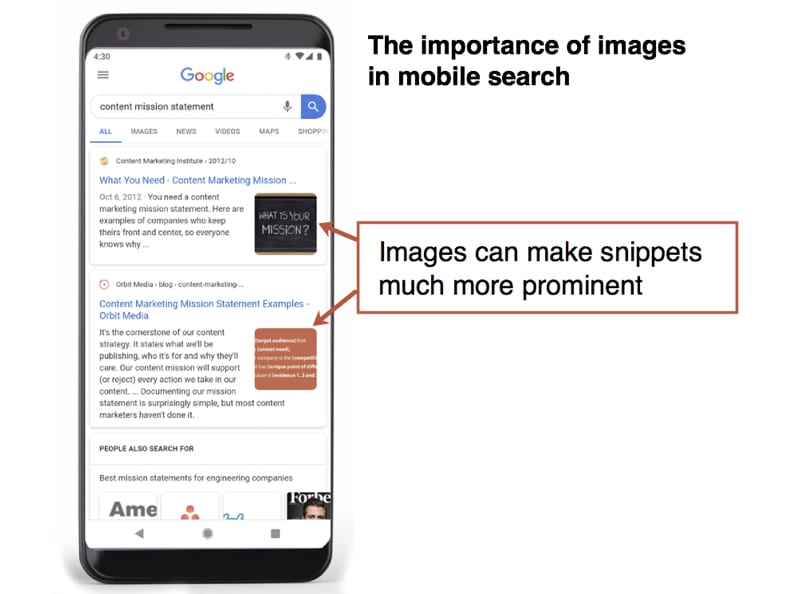
If you’re seeing lower than expected click through rates from mobile search to a URL, images could be the issue. More compelling, more meaningful images may improve traffic from current rankings.
5. Win with images in featured Snippets
That top spot, that zeroth ranking, is the “featured snippet,” and it now appears in 14% of all searches. This is part of the big megatrend in SEO and helps explains the general decline in click through rates from search.
But since it’s part of the game, we have to play. To win the featured snippet, you’ll need to rank on page one first. It helps to write simple grammatical forms (like you’re writing for a dictionary) and use simple list formatting (as in, short items within <li> tags).
Images are also a factor. Even when your page isn’t in that snippet, your image might be.
Here’s a search results page for “website navigation.” Wikipedia is the featured snippet. But the image is not. It’s from our article about website navigation. Click that image thumbnail and you’ll land in Google Image search. From there the “Visit” button brings you to our article.
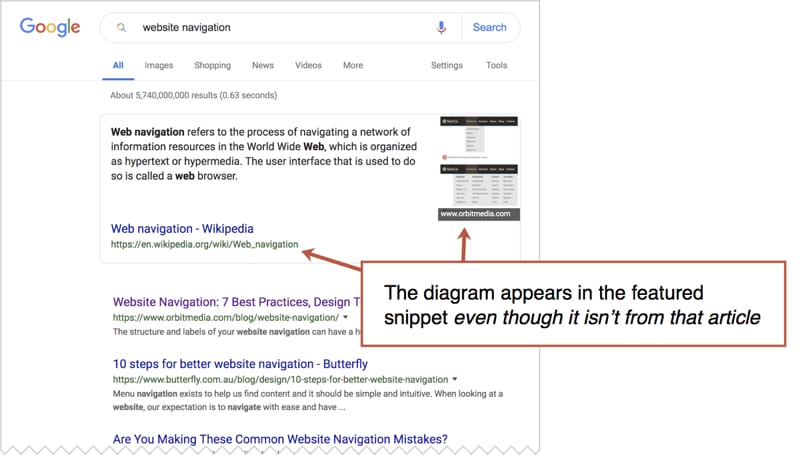
Personally, I feel it’s a bit disingenuous for Google to show the text from one article and the image from another because searchers may expect to find that image on that page. Clickbait? You decide.
6. Increased dwell time and positive “user interaction signals”
Your page ranks. A searcher clicks. They land on the page. What happens next? It’s usually one of two things:
- They stay for several long minutes, consuming the content. (long click, high dwell time)
- They stay for a few short seconds, then hit the back button. (short click, low dwell time, aka “pogosticking”)
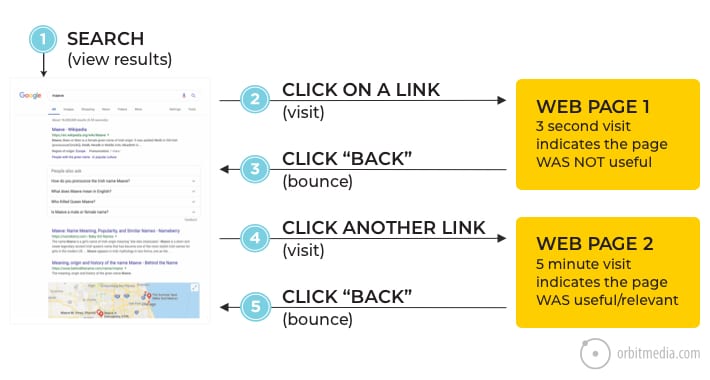
In both cases, the visitor bounced. But the second visit sent a much different signal to Google. Dwell time is a “user interaction signal,” and it likely affects whether or not your page continues to rank well.
And what’s the secret to high dwell time? Content that engages the visitor quickly and keeps their attention. That means no long blocky paragraphs and lots of compelling visuals.
We used to recommend adding an image to every article. Now we recommend adding an image to every scroll depth of every article. So there is never a point at which the visitor doesn’t see something of visual interest.
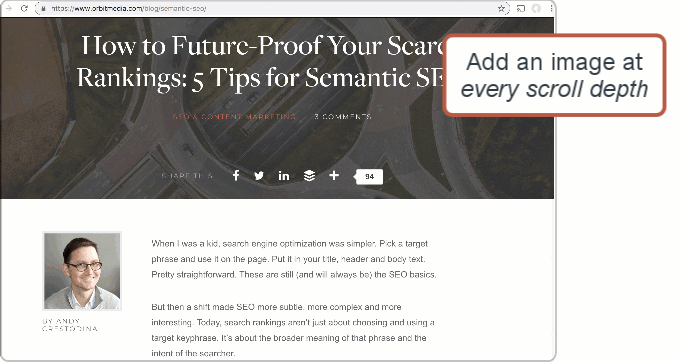
This may not always be possible because some topics just aren’t that visual. In these cases, you can use other formatting such as bullet lists and short paragraphs. And never miss the chance to add an image.
An article without a diagram isn’t optimized for search
That’s how important images are to SEO.
They are so helpful, so important in so many ways. Do it for authority, for rankings, for clickthrough rates and for your visitors.
Now you know why we spend so much time working on images for these articles. Once, when we tracked the time it takes to write an article, we found that we invest the same amount of time in the images and the words.

